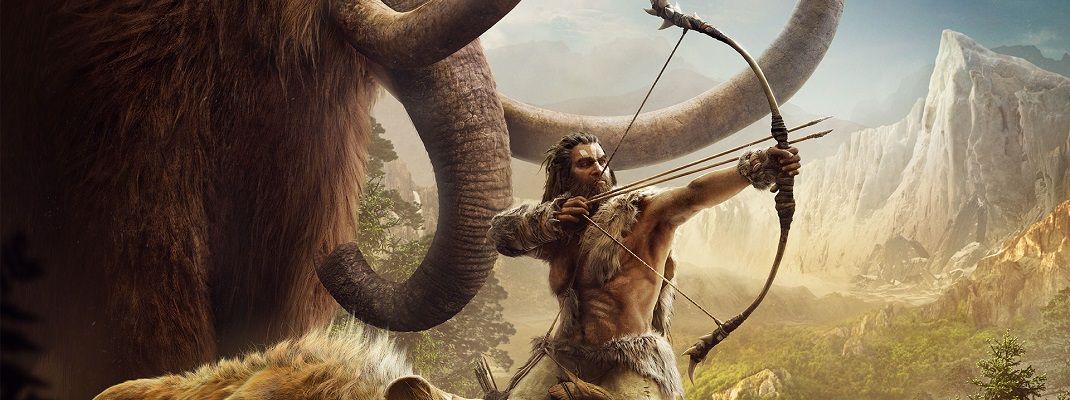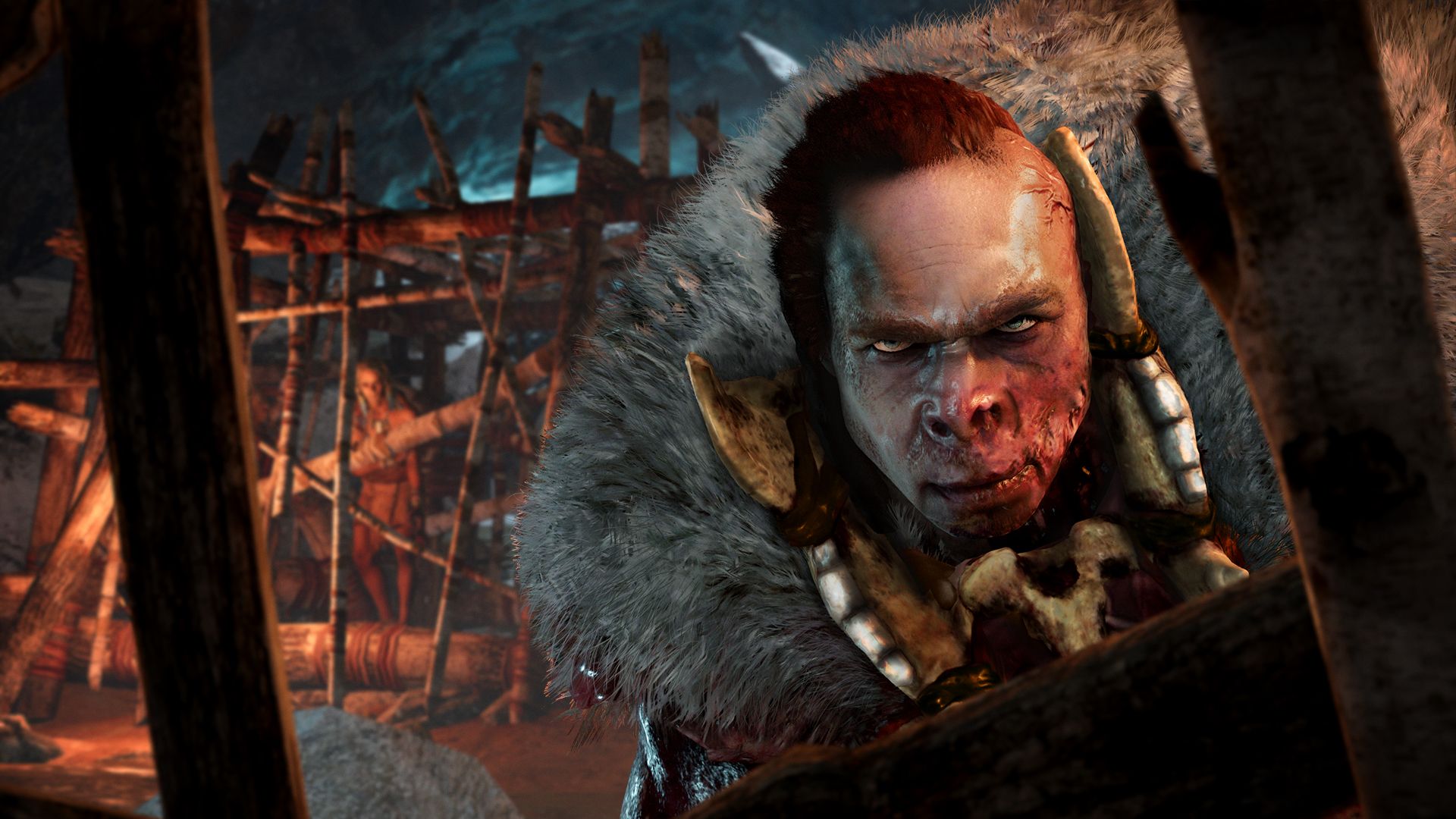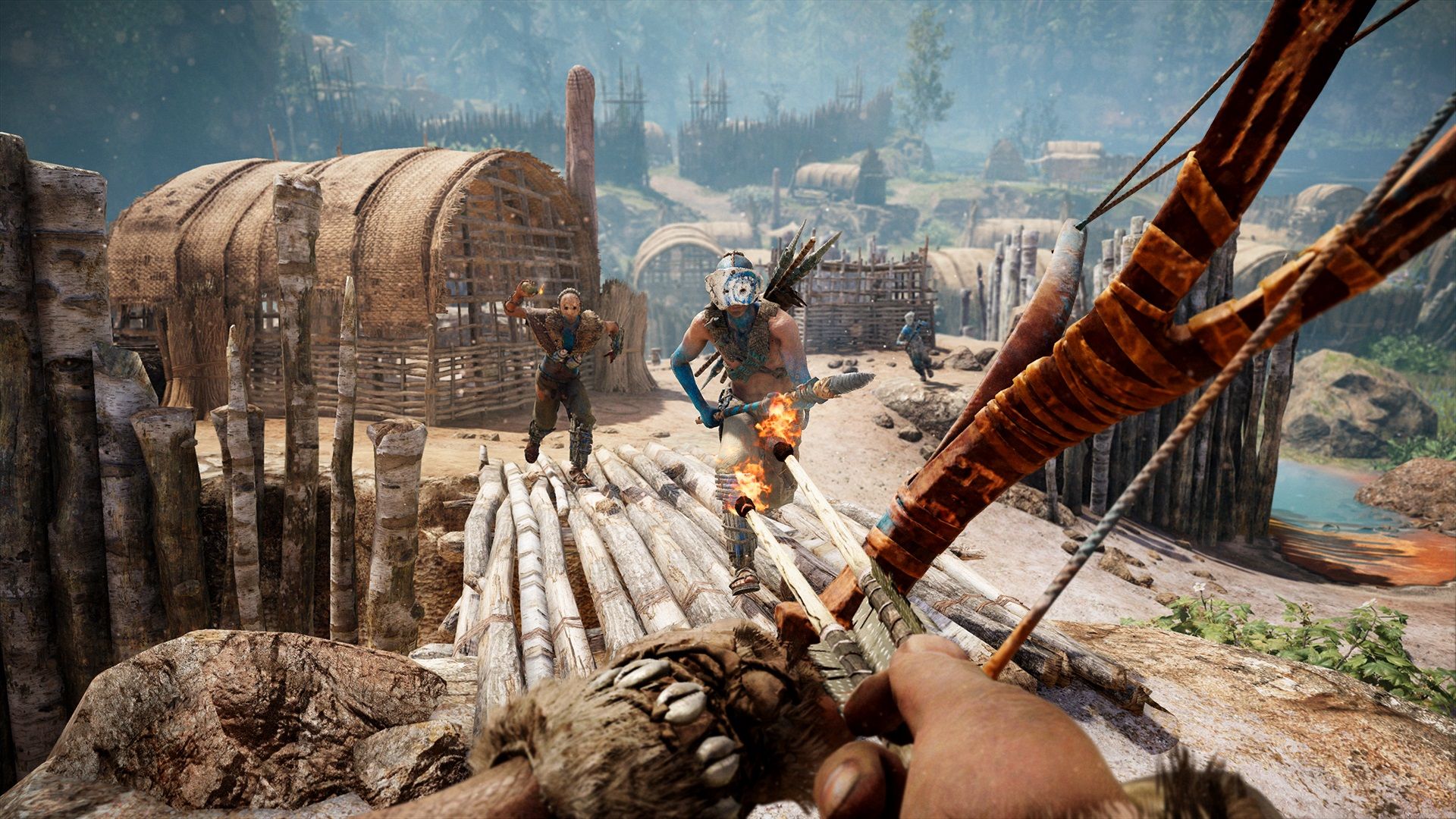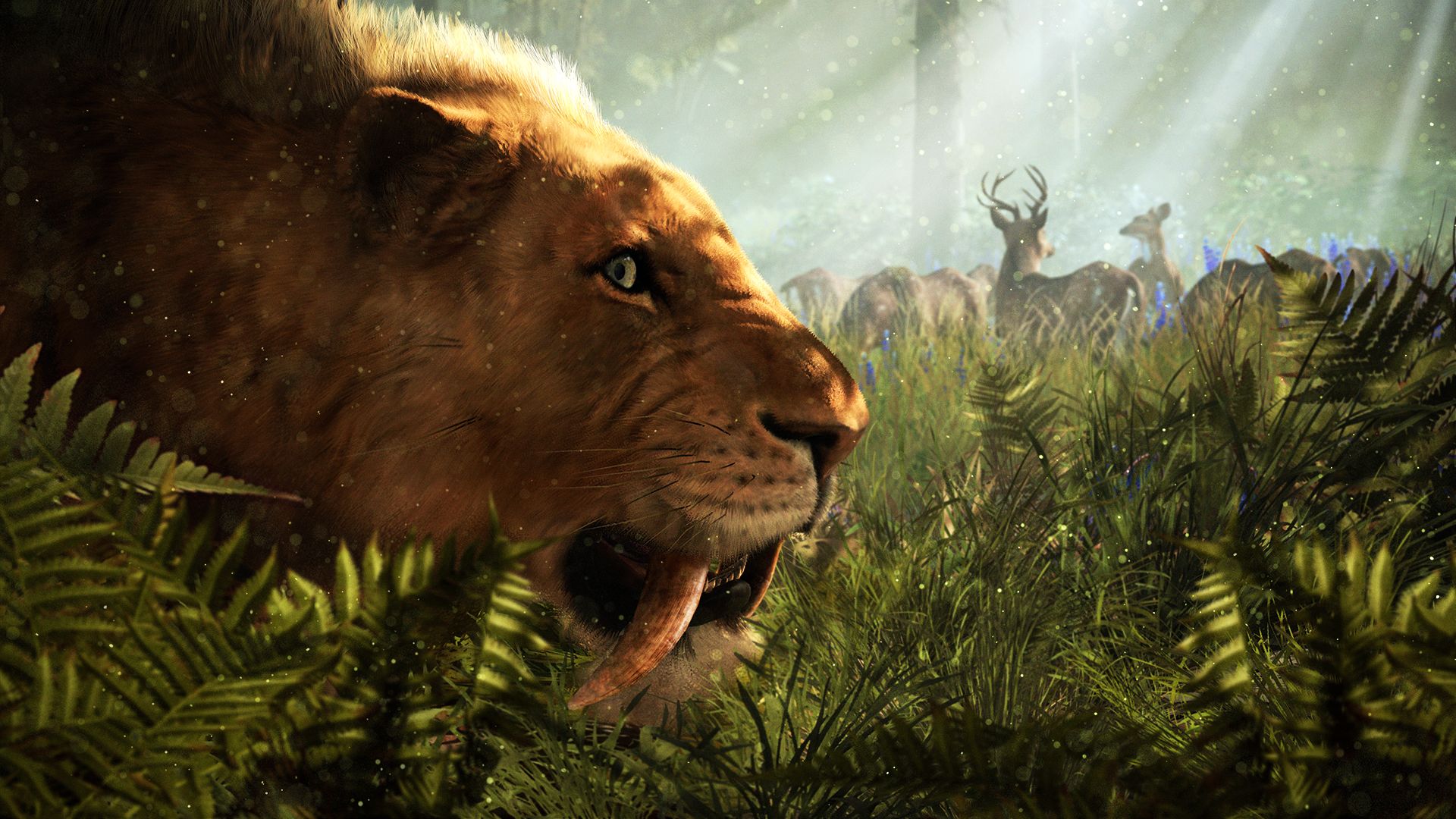The Far Cry franchise has never been afraid of change. Far Cry 2 aimed to be more realistic then the original, Far Cry 3 focused heavily on its story and villains, and Far Cry 4 took the setting out of lush jungles and into the frozen mountains. Far Cry Primal, however, easily takes the cake for biggest change to the franchise yet. Taking players back to 10,000 BCE, Primal ditches its guns, explosives and cars for bows, spears and wild animals. Is Primal a step forward for Far Cry, or is this an extinction event?
Far Cry Primal takes place during the Stone Age. Players step into the loincloth of Takkar, a member of the Wenja tribe making his way back to his homeland of Oros. Oros is not as it should be, with the Wenja broken and scattered by the cannibalistic Udam and fire-crazy Izila tribes. Working with his fellow Wenja, Takkar must bring his people together and defeat the leaders of the opposing tribes. Primal’s plot is unapologetically straightforward. It’s a story about survival and the struggle man has against itself and nature. There are no twists and turns, and it can be easy to see exactly how the plot will end. What’s going to keep players hooked is the story’s excellent presentation. Ubisoft Montreal worked with linguists and historians to create the verbal and body language for the characters with impressive results. It’s the different characters and their vibrant personalities that make Primal such an interesting and entertaining game to play through.
Takkar himself isn’t a blank space. Unlike Far Cry 4’s Ajay Ghale, he feels like a real life person with goals and determination. Though he continuously puts up with fetch quests, Takkar can at least justify his reasoning for doing it. Still, there’s never any sense of growth in his character. While Far Cry 3’s Jason Brody grew from weak to strong, forced to confront the consequences of his actions, Takkar never grows. Takkar at the beginning of Primal is the same as Takkar at the end of Primal. Primal also lacks a key distinguishing character. While Far Cry 3 had Vaas and Far Cry 4 had Pagan Min, Primal comes up empty. Ally Tensay and antagonist Batari come close, but neither have that large of a presence in Takkar’s adventures to put them on the same level as Vaas or Pagan Min.
Primal may have lost the guns, vehicles and over-the-top explosions, but it still manages to feel just like a Far Cry game. Oros is huge, nearly the same size as Far Cry 4’s Kyrat, with just as many different activities to pursue. Being a large map, Oros plays host to a variety of different locales. Sweeping jungles populate the west, swamps the south, grasslands the east and frigid tundra in the north.
Weaponry is what one would expect from the Stone Age. Clubs, bows and spears make up Takkar’s arsenal, though upgrades for each weapon can be crafted. Bows are, as one would expect, used for range combat, a club’s swing is excellent for hitting multiple targets and spears can be thrown or used as melee weapons. Takkar can also outfit himself with bait and an assortment of makeshift explosive devices. Though there may not be as much weapon variety compared to a modern day game, Primal gives players the right tools to get the job done.
Like previous Far Cry games, Primal is first-person, which means players will be engaging in a lot of first-person melee combat. The right trigger swings the weapon and the left trigger either charges a heavy attack (clubs) or allows for better aiming (spears and bows). While disorienting at first, players will eventually get used to the sensation. If not, they'll want to avoid using clubs, which tend to swing the camera back-and-forth. Spears typically keep the camera pointed straight at the action.
Primal is the biggest deviation from the standard “Ubisoft formula” that has permeated the majority of their games. Though some elements, like enemy-controlled outposts, remain part of Primal’s design, there are a few interesting changes. Towers, which revealed parts of the map, are gone. Oros is uncovered using a fog-of-war mechanic. The more Takkar explores, the more map players will uncover.
The other big change is the pacing, which now puts control of the story in players' hands. While no decisions that alter the story are made, players will be able to decide what missions they want to do and which they’ll ignore. There are a total of six specialists Takkar can recruit, with each unlocking different skill trees. While three of them are required by the story, the remaining three are all optional, as are all subsequent character quests. It’s possible to zoom straight to the end of the game, but players will be missing a lot. Helping the characters unlocks useful skills, such as extra health and resistance that make later fights easier to handle. In total, Far Cry Primal can last mere hours if players rush to the ending, but can easily last anywhere between 12-15 hours after completing all the character quests, and that number doesn’t include all the stuff that can be done in the open world.
Primal does play around with an interesting new mechanic: Beast Mastery. Early in the game, the ability to tame specific beasts is gained. All players have to do is throw some bait, and then slowly approach the animal. After that, they serve as constant companions and effectively serve as replacements for Far Cry 4’s co-op “Guns for Hire” mode. Taming only extends to certain wildlife. All forms of wolves and cats can be tamed alongside bears and honey badgers. In addition, there are rare animals (similar to Assassin’s Creed IV: Black Flag’s Legendary Ships) players can hunt that can also be tamed. Certain animals, like the sabretooth tiger and bear, can be ridden after unlocking a certain skill. Unfortunately, players will not be able to tame mammoths or elk, though mammoths are rideable after a certain skill is unlocked.
Cut from Primal is co-op and competitive multiplayer. Both were featured heavily in Far Cry 3 and 4, but have no place in Far Cry Primal. Neither mode became a huge staple in either game, so the loss isn’t huge. Ubisoft Montreal makes it clear that this is a single player game, and there’s enough content here to make up for the lack of any other modes.
Far Cry Primal looks and sounds astounding. Ubisoft Montreal smartly dumped the PS3 and Xbox 360 this time around to focus efforts on the current-gen consoles and PC, and the results are impressive. The world of Oros is absolutely beautiful with grass blowing in the wind, redwoods reaching towards the sky and water that reflects the sun and nearby objects. This beauty extends to the characters, who are the most detailed and realistic looking people Ubisoft has ever developed for a game. Sweat is visible as it runs down their foreheads, scars are red and wrinkle as a character speaks, and enemies writhe in terror as they burn.
Probably the most impressive part of Primal’s presentation is the animation and mo-cap work for the main characters. The actors do an amazing job of bringing these characters to life through excellent body language and script. Watching the performances is mesmerizing as the actors give life to people who we only have the faintest idea of how they lived and interacted with each other. A truly impressive feat.
Closing Comments:
Taking away guns, cars and explosions sounds like a huge risk on paper, especially for a franchise that has built itself on those properties. This makes it even more shocking that Far Cry Primal works as well as it does. Ubisoft Montreal has successfully taken the Far Cry franchise to the Stone Age, crafting a game that is both entertaining to play and watch. Primal isn’t without its problems. Melee combat can be disorienting and the story isn’t all that memorable. Still, Far Cry Primal nails what it does right. Beast Mastery is a great new mechanic, the presentation is fantastic, and most importantly, it feels just like a Far Cry game. Woolly mammoths may have gone extinct, but Primal ensures that the Far Cry franchise won’t follow suit.




